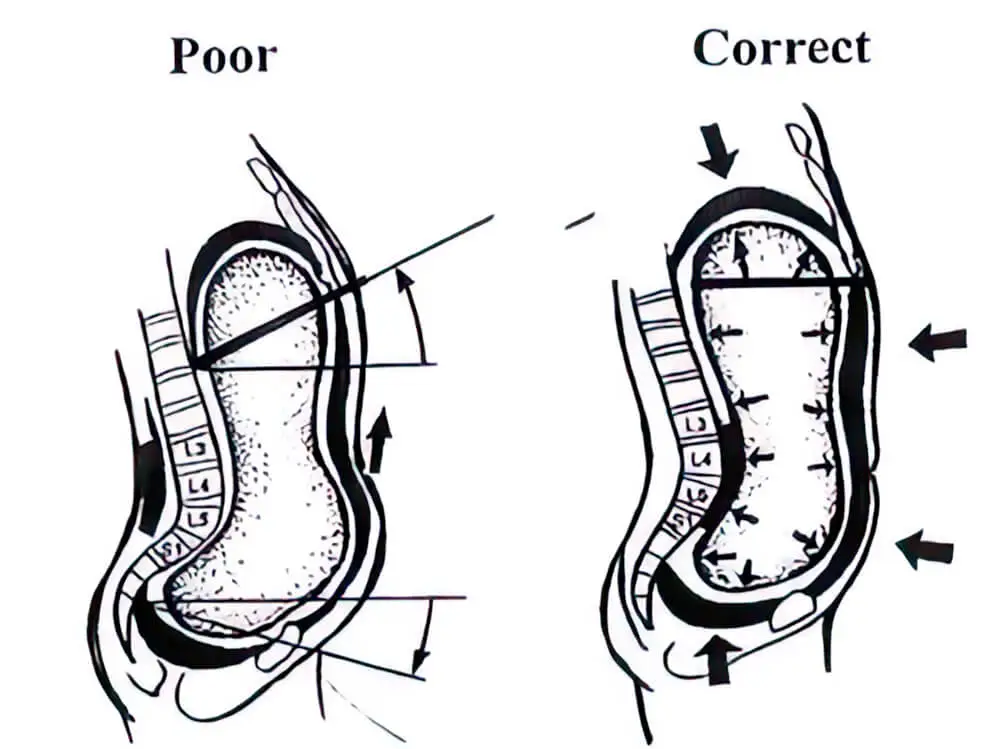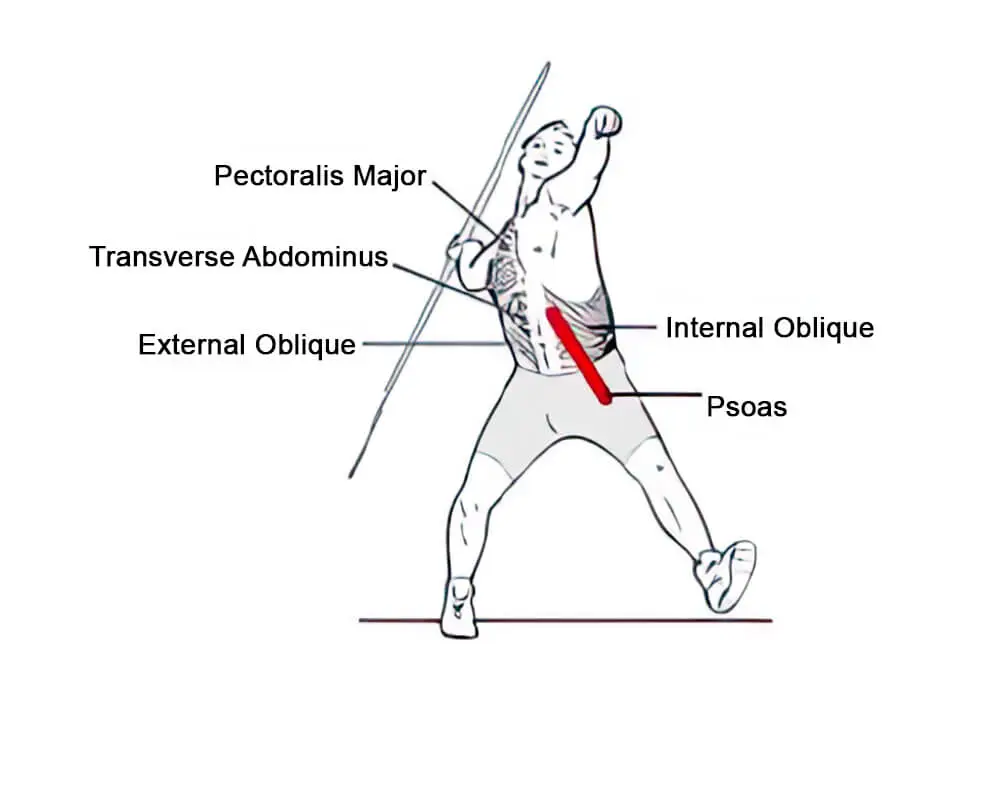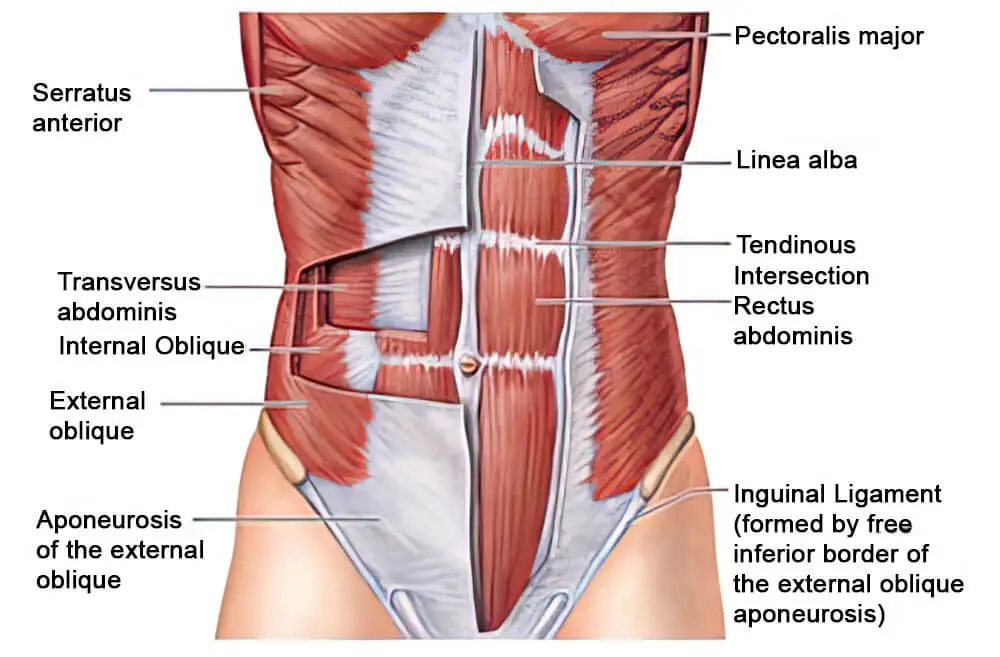If the Abdominals Are Not The True Core, Then What Are They Doing On My Body?
That is a great question–one that I promised I would answer approximately one week ago.
So here it is: The abdominal muscles, particularly the oblique muscles, are not the true core, but truly the means of muscular communication between what the upper and lower extremities are doing.
If you look in anatomy textbooks, you’ll see the function of the following muscles as such: (see picture above as well)
Rectus Abdominis: Flexes the trunk
External Oblique: Turns the trunk towards the opposite side of the contraction
Internal Oblique: Turns the trunk towards the same side of the contraction
Transversus Abdominis: Pulling the abdomen inwards
While these definitions can be true in the isolated sense of the muscle, or how we could test some of them with isolated muscle tests, they are actually supposed to do much more.
Fitness instructors often yell at their clients to “engage the core and suck it inwards towards their belly button.” In essence, they are telling them to contract the rectus abdominis and transverse abdominis and shorten them only, but again, this causes de-stabilization of the lumbar spine by inhibiting the diaphragm mechanism. This error also causes the brain to use secondary respiratory muscles (i.e. intercostal muscles, upper traps, SCM muscles, pec muscles, etc.) as the primary muscles of respiration, and, over time, putting undue strain and compression on the cervical spine (neck), pulling the lower ribs upwards (so they protrude forward—see picture), compressing the lumbar spine discs, and leading to shoulder injuries.

So, let’s examine my claim about the abdominals being more for the purpose of communicating between the upper and lower extremities, particularly those on opposing sides (i.e. right arm, left leg)
First off, as a pre-requisite, the rectus abdominis and the transversus abdominis must create slight inward pressure, against the outward pressure of the diaphragm pushing the abdominal contents down and out—this is massively different than sucking them in, as they will actually be firing AFTER the diaphragm has already begun to contract, instead of being the only muscles to fire in a completely concentric (shortening) fashion.
Once this sagittal plane stability is afforded by those two muscles contracting properly (that is, after and along with the diaphragm), the obliques do their communication in so-called anterior and posterior oblique “slings” between upper and lower body movements. Think of them as the rubber bands in a sling shot—communicating to the object that needs to move (i.e. a pebble) from the force that initiated its movement (i.e. the hand pulling it back)
Here’s an example of this that everyone should be doing on a daily basis. When an individual goes to take a step forward with their right leg, the first thing to contract (after the diaphragm) is the right psoas (hip flexor), which is followed immediately by the internal oblique on the right and external oblique on the left, followed by the muscles of the left arm/shoulder that produce arm swing. So in a person who is fully Activated, this is the proper pattern.
Or, take someone throwing a baseball, serving a volleyball, or hitting a tennis ball. Those movements, when done properly, are initiated by the opposite psoas muscle, quads, adductors, glute medius, etc., and the force is communicated through the oblique abs to the shoulder/arm holding the baseball, hitting volleyball or holding the racquet
(see the picture below with the javelin thrower’s left psoas drawn in)
I could provide many more examples, but hopefully, you understand the principles and overall concept!

Next week I will provide some explanation of common exercises that are done often to tone up these muscles but I don’t believe to be very effective at increasing athletic performance, and also show better exercises that are more functional.
If you find yourself identifying with any of these issues or others that are related, please contact us at (847) 342-3000, or book an appointment with us online!

